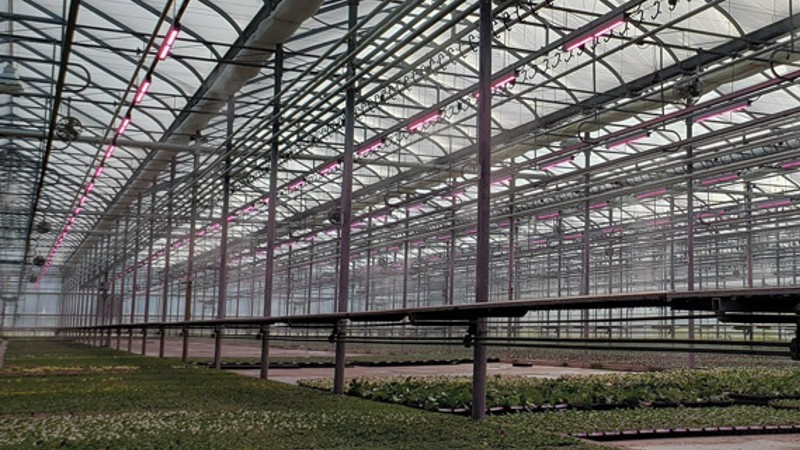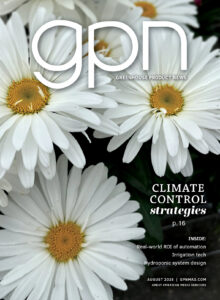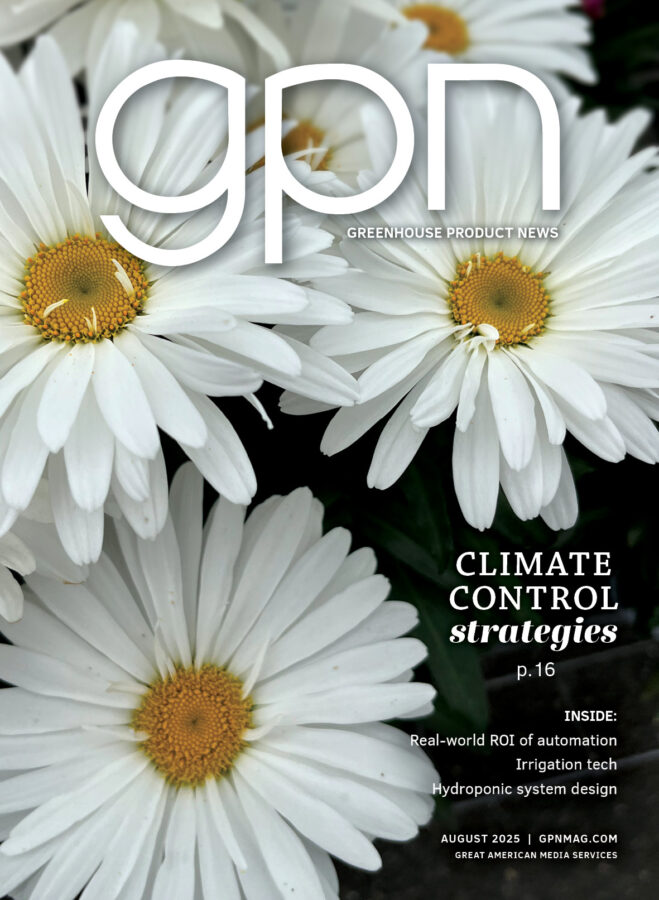
Technically Speaking: Getting Started With Supplemental Greenhouse LED Lighting
The use of electric lighting inside greenhouses is nothing new, but the technology and sophistication of lighting have advanced dramatically in the last several years. Unlike conventional fixtures (i.e., high-pressure sodium), light-emitting diodes (LEDs) literally come in all shapes and sizes, emit different colors and intensities, and have a range of energy efficacies. This can make the process of choosing a lighting product daunting. This article outlines how to get started with supplemental greenhouse lighting with LEDs.
1. Determine the desired light intensity.
Supplementing sunlight is most useful during light-limiting conditions; for example, when the daily light integral (DLI) from sunlight is less than 10 moles per square meter per day (mol∙m–2∙d–1). The first step is to determine the light intensity you want to deliver, which is based on how much light you receive from the sun and the minimum target DLI for your crop(s). For example, if you receive an average of 5.5 mol∙m–2∙d–1 during your darkest month from the sun, and your target DLI is 10 mol∙m–2∙d–1, an additional 4.5 mol∙m–2∙d–1 needs to come from supplemental lighting.
The instantaneous intensity needed to deliver this 4.5 mol∙m–2∙d–1 is calculated by converting mol to μmol, dividing that value by the hours (h) you plan to light each day, then dividing that value by 3,600 (the number of seconds per hour). For example, if you plan to light 18 h∙d–1:
• 4.5 mol∙m–2∙d–1 = 4,500,000 μmol∙m–2∙d–1
• 4,500,000 μmol∙m–2∙d–1 / 18 h∙d–1 = 250,000 μmol∙m–2∙h–1
• 250,000 μmol∙m–2∙h–1 / 3,600 s∙h–1 = 69.4 μmol∙m–2∙s–1
2. Quantify the growing area and constraints.
Several characteristics of the growing space need to be measured, including the dimensions of the greenhouse growing area. The maximum hanging height of light fixtures also needs to be determined. Identify placement options and constraints for fixtures considering overhead obstructions, especially energy/shade curtains, and electric service capacity.
3. Contact multiple companies for quotations.
Make initial contacts with several lighting companies or lighting distributors, considering their knowledge and experience with plant lighting. A lighting representative should engage with you to understand your lighting needs and propose different options. Ask them for referrals of greenhouse customers and contact them to assess their experiences with the company and product. Expect timely communication with the lighting company/distributor and move on if you don’t receive sufficient attention.
4. Understand efficacy.
One of the more important metrics of a lighting fixture is its efficacy, which refers to how efficient it converts electricity into light useful for photosynthesis. The efficacy metric is in micromoles of photons within the photosynthetically active waveband per watt of energy consumed. Efficacy has a unit of micromoles per joule (μmol∙J–1 or μmol/J), and higher values mean the fixture is more efficient. Target a minimum fixture efficacy of 2.5 μmol∙J–1.
5. Only consider LEDs that are a qualified horticultural product by the DesignLights Consortium (DLC).
This helps ensure the lighting fixture is at least moderately efficient, can withstand greenhouse conditions, has at least a five-year warranty and meets other performance minimums. For more, visit www.designlights.org.
6. Consider the light spectrum for people.
The most efficient LEDs emit mostly red light, but, in most cases, at least some blue light also needs to be delivered for acceptable plant growth. A combination of blue and red light creates a purple light that is energy efficient but visually unpleasant. The inclusion of white LEDs in a fixture slightly decreases the fixture efficacy but creates a softer pink or whiter light that improves color rendering and creates a more comfortable work environment.
7. Compare lighting solutions.
Obtain multiple lighting plans from different companies and compare costs to purchase and install, including eligibility of rebates and incentives from utility providers. Also consider the fixture efficacy, light spectrum, uniformity of the lighting plan, product warranty, fixture longevity, projected shipping date and nontangibles like customer service. A lot of the LED product information is on the horticulture qualified product list (Hort QPL) of the DLC website. When possible, discuss options with an unbiased plant lighting expert.
For an enhanced reading experience, view this article in our digital edition by clicking here.









 Video Library
Video Library 


















